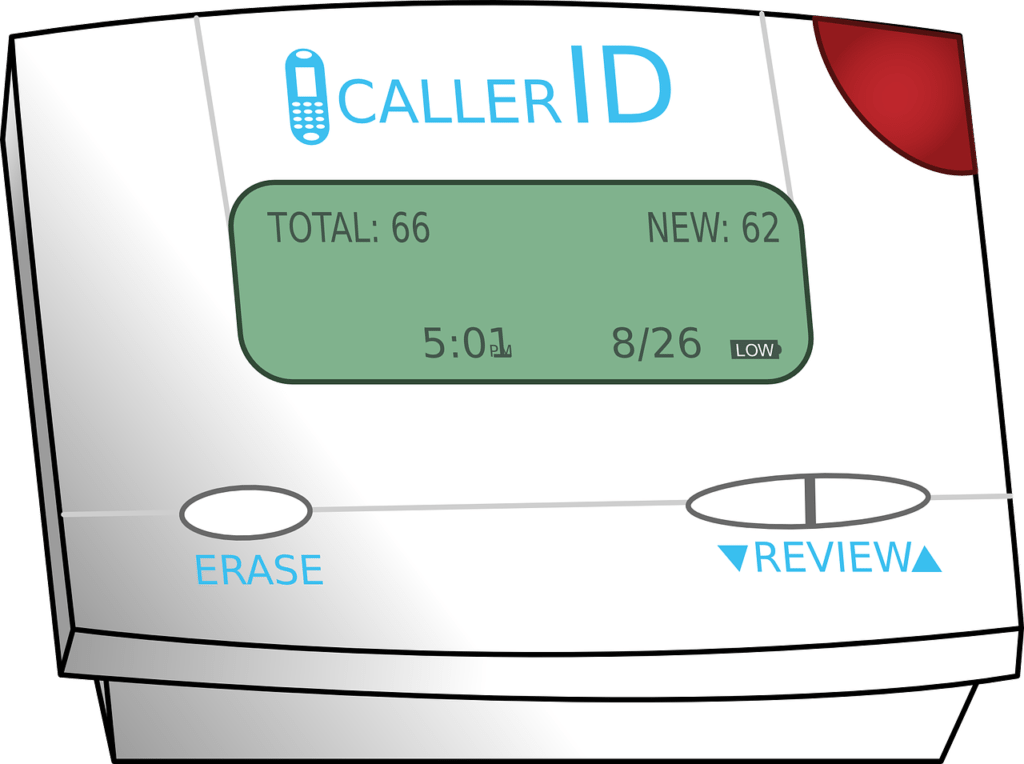You hear the phone ring and look at the Caller ID to see the number and if available, the name. It is your friend’s phone, so you answer it. You say “hello” and the voice on the other end is an automated voice telling you your automobile’s warranty has expired. In other cases, the number is unfamiliar, but if you have Caller Name ID, it may display a governmental entity, such as the IRS or the Social Security Administration. This is Caller ID “spoofing.”
Caller ID works by the phone provider sending an ANI (Automatic Number Identification) signal which is digital data that is decoded by the caller id unit in your landline phone or cell phone. The more advanced Caller ID displays, the name, phone number, city and state, which is just extra data sent with the ANI.
Before cell phones and VOIP (Voice over Internet Protocol, which is telephony over the internet), One had to have a great deal of technical expertise and very expensive equipment. However, all that is needed now is the right software or a subscription service the telemarketers can have their outbound calls display whatever name or number they wish. In many cases, it is simply a matter of going to a website, and a few clicks of the mouse and telemarketers can change their outgoing name and/or number.
Caller ID spoofing is more than a nuisance; it is the doorway to fraud and possible access to your voicemail system. Scammers may ask for your banking info, or social security number, or even tell you that you owe money to the IRS and if you don’t pay immediately, you will be arrested. Some voicemail services are set to allow access if you call in from your own number and if you do not have a password on the account; scammers who have spoofed your number will have access to your voicemails.
Under the Truth in Caller ID Act, FCC rules prohibit anyone from transmitting misleading or inaccurate caller ID information with the intent to defraud, cause harm or wrongly obtain anything of value. Anyone who is illegally spoofing can face penalties of up to $10,000 for each violation. However, spoofing is not always illegal. There are legitimate, legal uses for spoofing, like when a doctor calls a patient from her personal mobile phone and displays the office number rather than the personal phone number or a business displays its toll-free call-back number. Telemarketers are required to display their number, and if possible, their name or the name of the company that they represent. The number they display should be a number you can call to ask to be remove. This includes businesses that already have a relationship with you.
Some thing you can do: When you see a number you do not recognize, do not answer. You may also screen the call by letting it answer and go into voicemail. One thing I do is to answer and try to glean as much information about the company so I can give that to the FCC https://pixabay.com/en/caller-id-caller-identification-cid-33523/when I file a complaint. There some apps for cell phones that will block, screen, or alert you to a fraudulent call, even let you record the conversation. These two apps stand out from the rest: Robokiller, which takes an audio fingerprint of the call to compile a database to recognize it as a scammer, and Trap Call, which besides screening and blocking, will let you record the call. Phone providers now offer subscription services that have similar features. Call your provider to find out what they offer. You can register your phones on the National Do Not Call Registry here: https://www.donotcall.gov/ .Bear in mind the legitimate telemarketers will honor this registry but the scammers ignore that list. They are risking huge fines. The FCC has begun to fine these telemarketers that violate the law; recently, the FCC has fined an Arizona telemarketer, $37.5 million. To file a complaint with the FCC: https://consumercomplaints.fcc.gov/hc/en-us/articles/115002234203-Unwanted-Calls-Phone-
If your number is one the telemarketers and you are receiving complaints, you could put a message on your voicemail that your number has been spoofed. You do not have to do this permanently as the scammers do not use a number for very long. You can go to this link and fill out a complaint form with the FCC: https://consumercomplaints.fcc.gov/hc/en-us/requests/new?ticket_form_id=39744. One thing not to do is to push an option to have your removed as instructed by a voice prompt. This is a trick to register your phone number in the telemarketer’s database.











